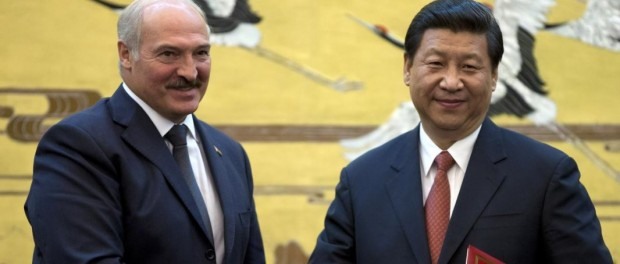In Belarus, China Seeks Gateway to Europe

As expected, Xi and his counterpart, Belarus’ President Alexander Lukashenko, signed a treaty of friendship and cooperation on May 10. In the treaty, both sides agreed to cooperate “to preserve and strengthen peace and stability in Eurasia, to turn the region into a zone of peace, security and sustainable development, joint wellbeing, and harmony,” according to Belarus’ state news agency, BelTA. Xi and Lukashenko also agreed to strengthen the existing comprehensive strategic partnership between their countries, established in 2013 during Lukashenko’s visit to China.
Xi in particular mentioned the need “to turn the high-level political relationship into more substantial and practical outcomes,” according to Xinhua. Xi envisions an increased focus on the China-Belarus Industrial Park, which he said could become a “pearl” on the Silk Road Economic Belt. The park, also known as “Great Stone Industrial Park,” was first conceived of in 2010 but only saw real progress as China began promoting its vision of a Silk Road Economic Belt linking China to Europe via Central Asia.
During Xi’s visit, Belarus formally agreed to work with China on the Belt, which will mean expanded cooperation on trade, finance, infrastructure, and energy. In an interview with Xinhua, Lukashenko said that, for Belarus, “What is of foremost importance is to construct a transportation network of railways, highways, airways and so on, and what comes the second is to provide a venue for producing competitive products.”
Lukashenko also expressed his admiration for China’s development model, including Beijing’s insistence on social control as a necessary precursor to growth. He told Xinhua that he “adopted China’s step-by-step economic reform style in Belarus.”
On a geo-strategic level, Lukashenko pointed to the deeper significance of China-Belarus ties, arguing that cooperation between the two could help boost China’s influence in Europe. That matches well with China’s general strategy — using investment-hungry Eastern European countries to gain a foothold in Europe.
Currently, China-EU relations are mainly based on trade and economics. The two sides have only slowly moved toward defense and security cooperation, and remain divided over deeper strategic issues, particularly when it comes to the future of the international order.
Eastern Europe, however, is generally more open toward China. A recent global public opinion survey by Gallup showed that people in Eastern European countries generally have more confidence in China’s leaders than their Western European counterparts do. In practice, China’s engagement with Eastern Europe is different than its interactions with the West — it even has its own dialogue platform, the China-Central and Eastern Europe (CCEE) leader’s meeting, to engage with these countries outside the broader EU framework.
For Eastern Europe, China provides an alternative source of funding, decreasing reliance on the EU (or Russia, in the case of countries like Belarus). And for China, good relations with Central and Eastern European countries provide more strategic clout in the region, and pave the way for China’s “One Belt, One Road” strategy to blossom in Europe. Both Xi and Lukashenko noted that Belarus, thanks to its geographical placement as the gateway between Eurasia and Europe, has a major role to play in bringing the Silk Road Economic Belt to Europe.






Leave a comment